The chessboard has 64 squares, 32 are dark and 32 are white.
There are 32 chess pieces, 16 of which are White’s and 16 of which are Black’s.
For each side, there are eight pawns, two knights, two bishops, two rooks, one queen, and one king.
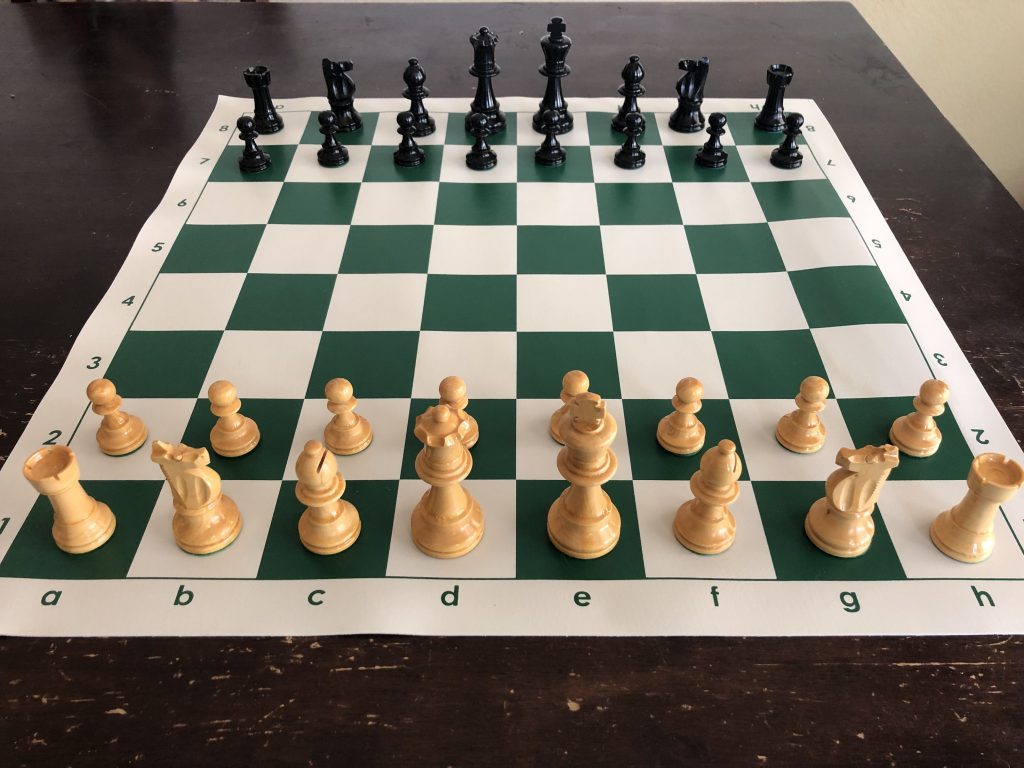
To set up a chessboard, ensure the bottom-right square of the board is a light square for white.
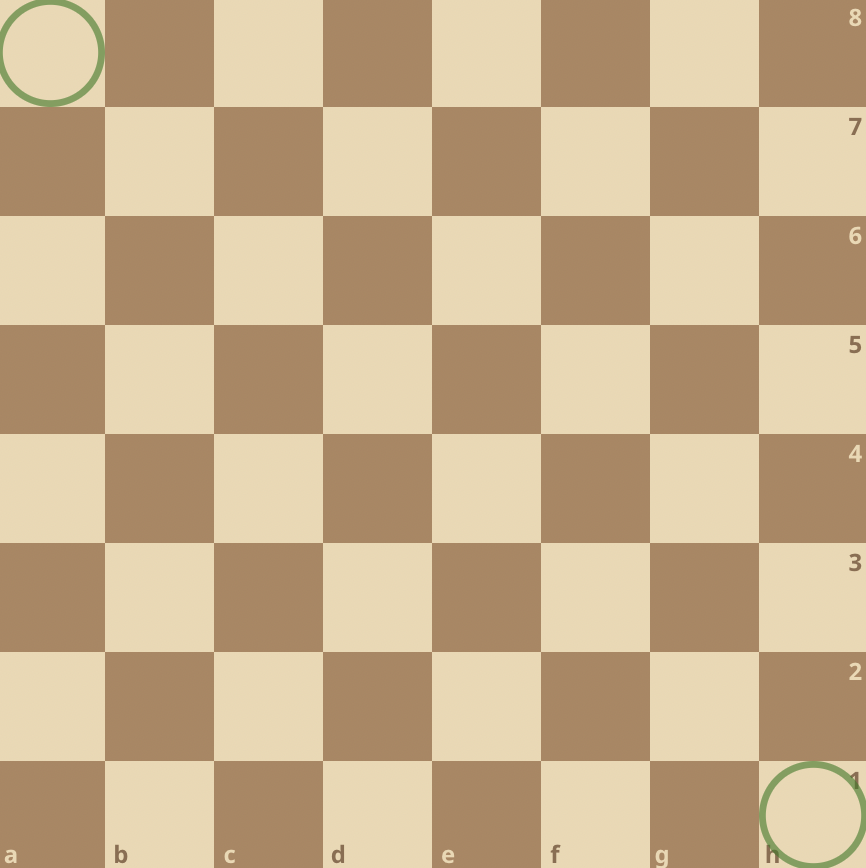
Your pieces are placed on the two horizontal rows (ranks) closest to you. The major pieces are placed on the first rank. The pawns are placed on the second rank.
When setting up your chessboard, remember that White is always on the 1st and 2nd rank while Black is always on the 7th and 8th ranks.
Enough said. Let’s go through the step-by-step process:
Step 1: Place The Rooks In The Corners

You can start your piece arrangement from the rooks. Put a rook in each corner.
When the game begins, each side has two rooks. The rooks begin the game in the corners of the chessboard, with White’s rooks on a1 and h1 and Black’s rooks on a8 and h8.
Lear how the Rook Moves in Chess.
Step 2: Place The Knights Next To The Rooks
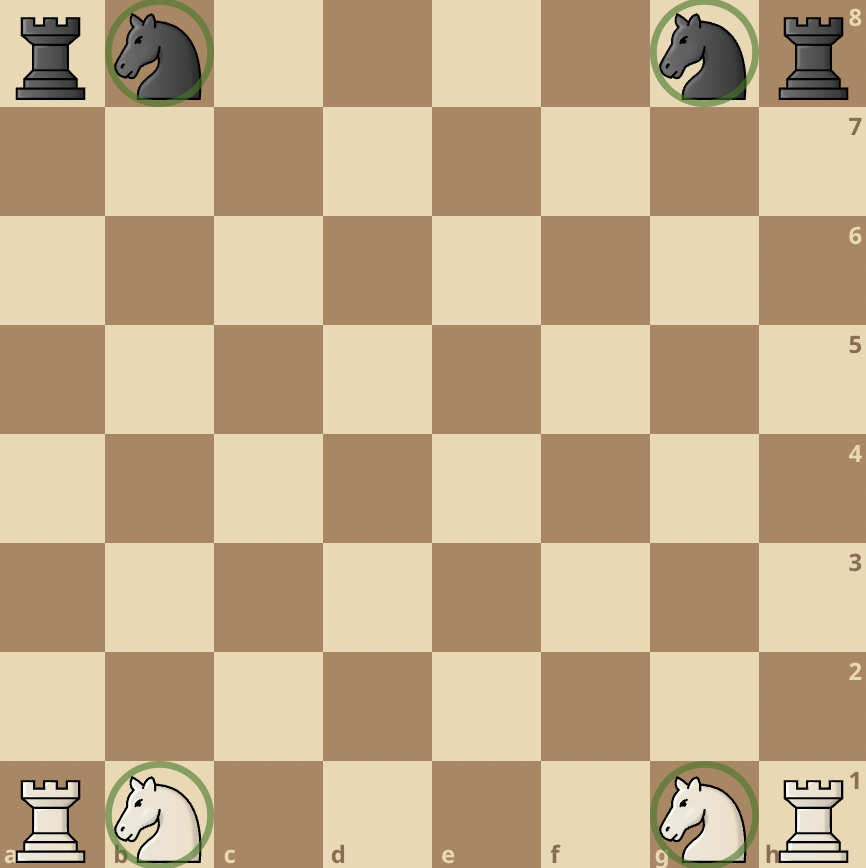
Next is the knight. Place the knights beside the rooks.
The knights, which resemble horses move three squares in an “L” shape – two squares in any direction vertically followed by one square horizontally, or two squares in any direction horizontally followed by one square vertically.
Knights are the only pieces that can hop over other pieces to make their moves.
When a game begins, each side starts with two knights. White’s knights start the game on b1 and g1, while Black’s knights begin on b8 and g8.
See how the Knight moves in chess.
Step 3: The Bishops Are Next To The Knights
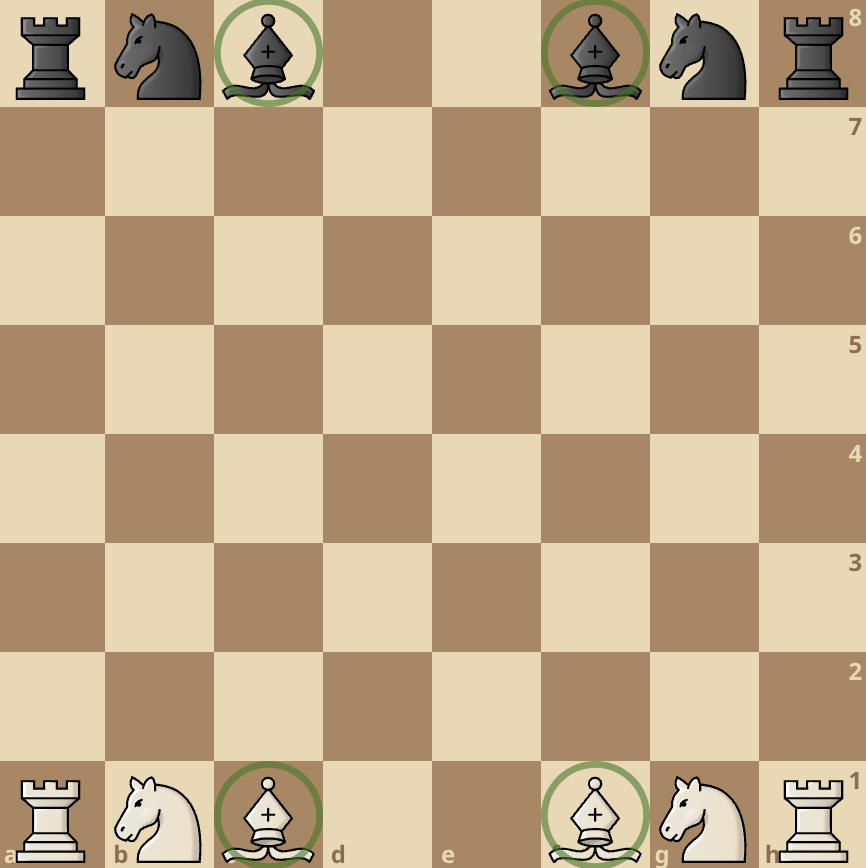
Starting next to the knights are the bishops.
The bishop is a tall, round-topped piece with a beautifully carved arc on the head. Bishops move only along diagonal lines.
At the beginning of the game, each side starts with two bishops. The light-squared bishop for White starts on the f1-square while Black’s light-squared bishop starts on the c8-square. White’s dark-squared bishop begins on the c1-square, while Black’s dark-squared bishop begins on the f8-square.
Learn how the Bishops move in chess.
Step 4: The Queen Goes On Her Color
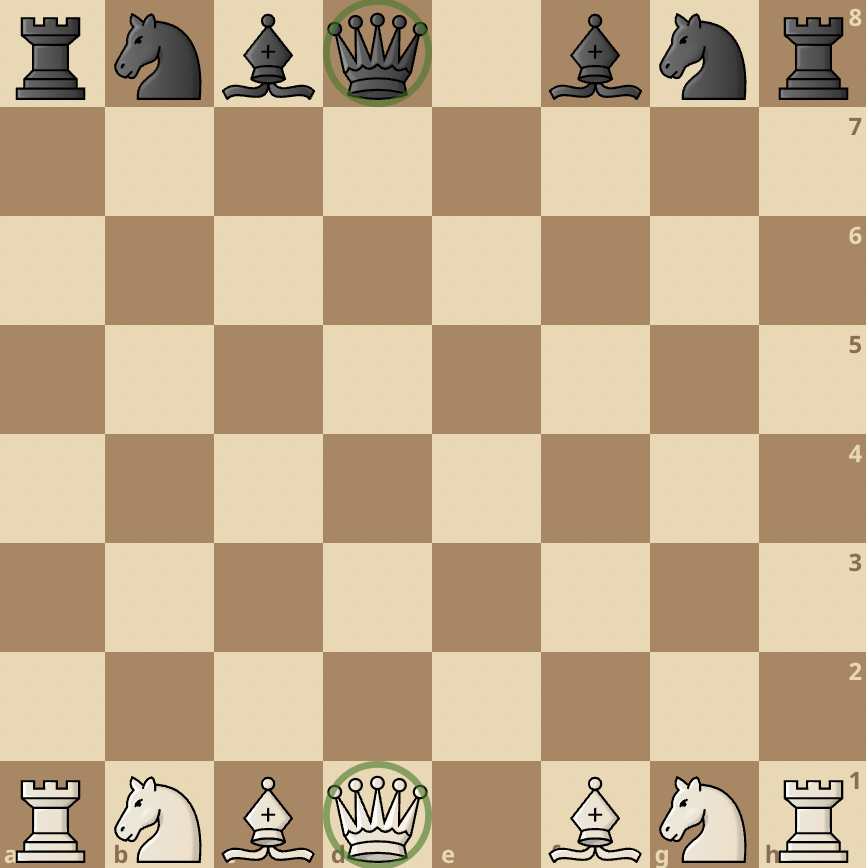
If you are on the White side, place your queen on the white square in the middle of the first rank.
If you’re playing Black, place your queen on the dark square in the middle of the eighth rank.
The queen is one of the game’s tallest pieces, with a spiked crown. She can move any number of spaces horizontally, vertically, or diagonally, making her the most powerful piece on the board.
The white queen is placed on the d1-square, and the black queen starts on the d8-square (directly next to the kings).
Step 5: Place The Kings Next To The Queens
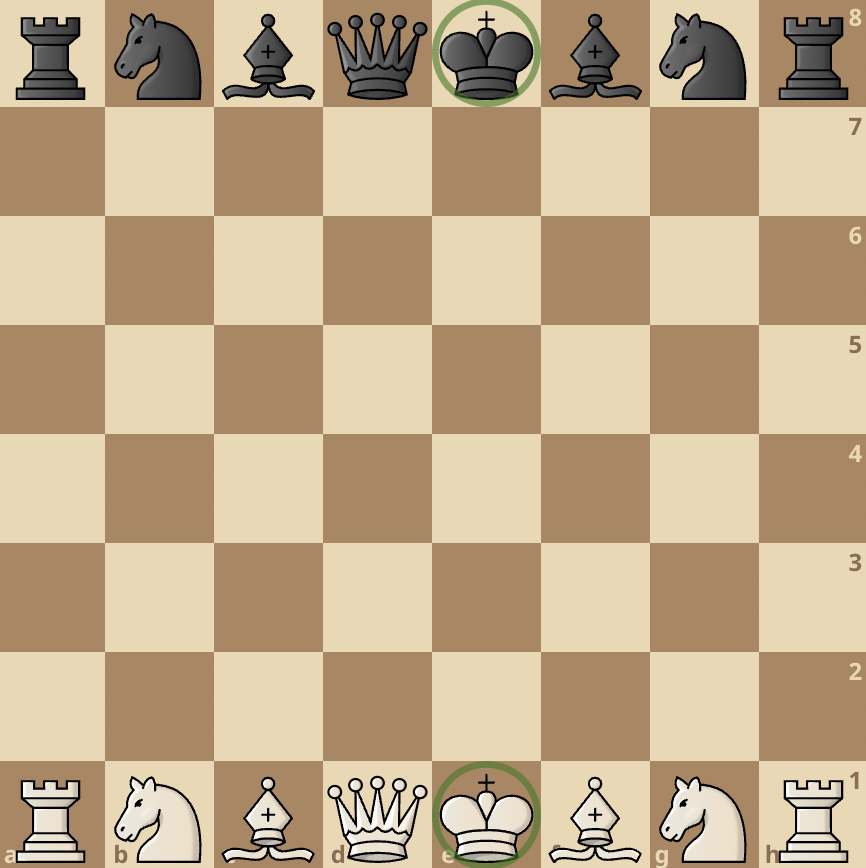
Place the king on the first rank’s last open square.
The king is usually the tallest piece on the board, with a rounded crown topped with a cross. The king can move in any direction, but only one space at a time.
At the beginning of the game, the White king starts on the e1 square, and the Black king starts on e8.
Learn more about how the King moves in chess.
Step 6: Place All The Pawns On The Second Ranks
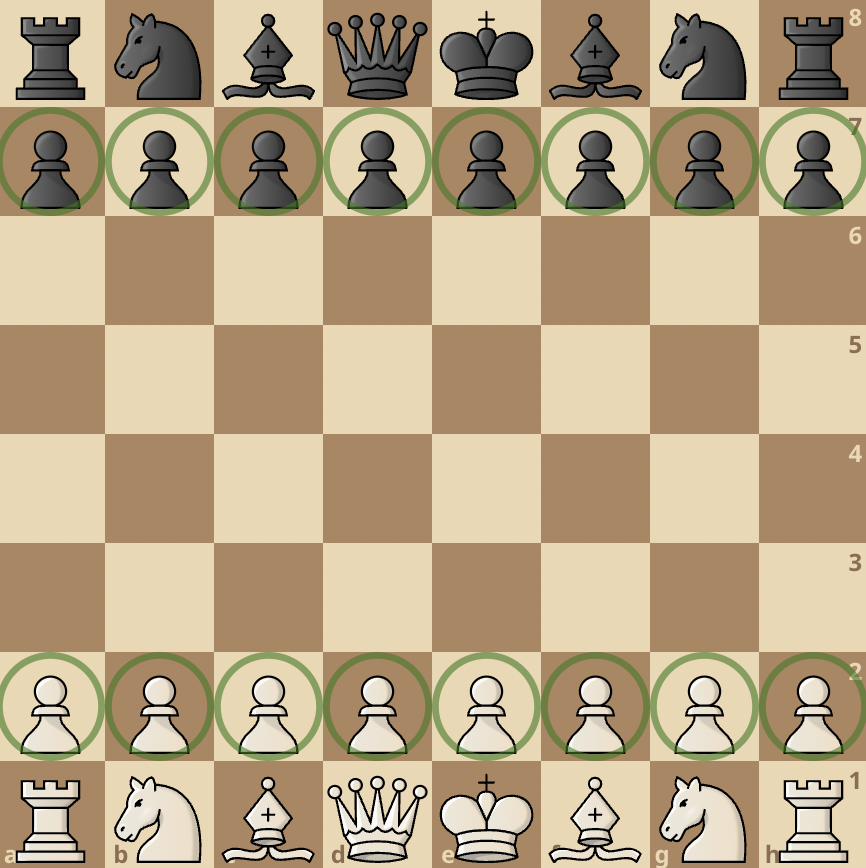
Finally, arrange the pawns on the second rank.
After placing your major pieces on the first rank, form a protective wall of pawns on the second rank.
When a game begins, each side starts with eight pawns. The pawns begin the game on the second and seventh rank.
White’s pawns start on the second rank, while Black pawns are located on the seventh rank.
The pawn is the least powerful chess piece, but it can be promoted into any other chess piece (except for a king).
Learn more about the Pawn in chess.
We hope you got value from this tutorial.
We recommend these additional resources for further study:




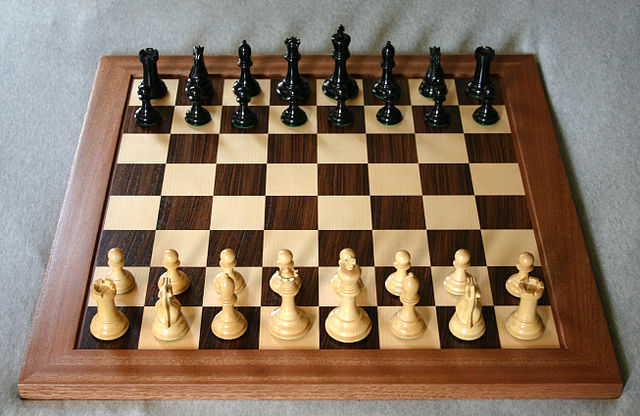

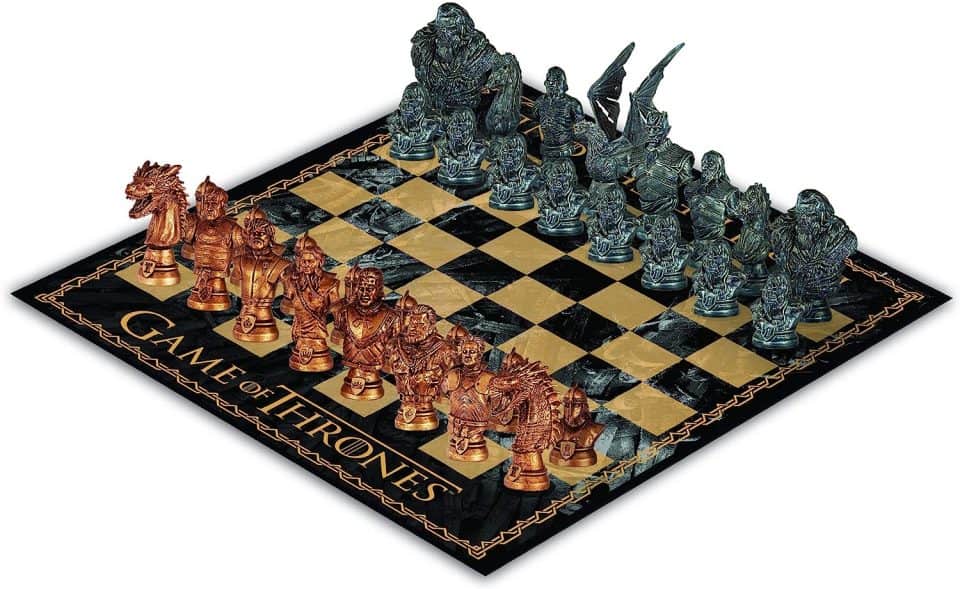
join the conversation